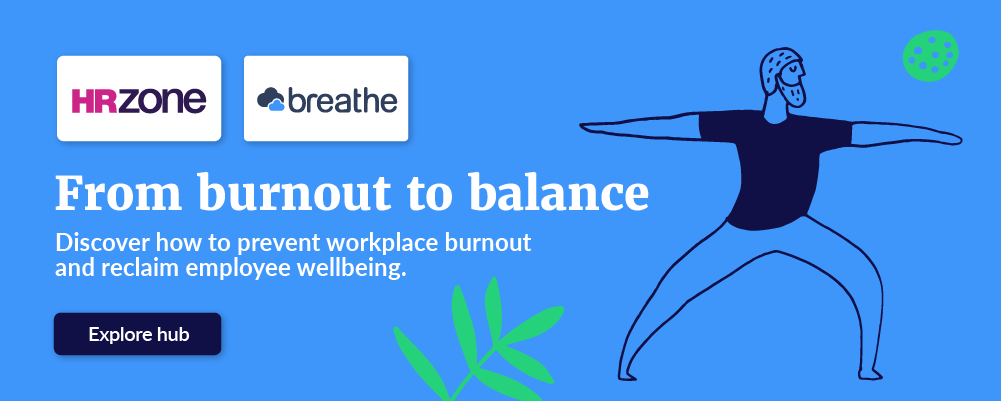Workplace burnout can creep up on the best of us. And it doesn’t discriminate. Burnout can affect anyone – from top executives to entry-level employees. Often, burnout creeps up unnoticed, leading to serious consequences for both physical and mental health. A few factors contributing to burnout include the desire to appear dedicated by working long hours, neglecting personal life, and constantly striving for success. When it strikes, it not only affects the employee but also the business, reducing productivity and increasing absenteeism.
What is employee burnout?
Burnout is now recognised as a legitimate medical condition, often defined as a state of physical or mental exhaustion.
In the past, it was sometimes confused with depression or anxiety. Today, it’s clear that burnout is its own distinct issue, where simple tasks start to feel overwhelming, and employees may feel disconnected or helpless, questioning why they can’t perform as they once did.
Burnout is commonly triggered by prolonged stress or frustration at work, especially when an employee feels their efforts are not yielding the desired results. Ironically, burnout often strikes those who initially excel at their jobs, deeply care about their work, and push themselves hard. As Mind Tools notes, those who are highly dedicated are often at the most risk of burnout, while those who are less passionate may avoid its emotional toll.
Symptoms of employee burnout
Alison Benney, founder of enlightenHR and a workplace expert, highlights several warning signs of burnout, such as:
- Disappearing from contact: A noticeable reduction in communication or avoiding interactions.
- Behavioural changes: These can include a talkative person suddenly going quiet or someone normally quiet becoming unusually vocal. Emotional outbursts or increased argumentative behaviour may also be indicators.
Other symptoms include:
- Feeling persistently hopeless about life and work
- Increased absenteeism due to sickness
- A constant feeling of physical and emotional exhaustion
- Lack of motivation and declining job performance
- Emotional negativity, such as cynicism, frustration, and pessimism
- Struggles with concentrating or completing tasks
- Self-neglect, such as poor diet, lack of exercise, excessive drinking, or smoking
- Long-term health issues, including digestive problems, obesity, heart disease, and depression
Seven ways to prevent burnout in your workplace
Burnout can significantly harm both employees and overall business performance. Employers should take proactive steps to prevent it from developing into a more severe issue. Here are seven practical ways to help prevent burnout:
1. Encourage employees to unplug
Set clear boundaries for after-hours communication, ensuring employees don’t feel pressured to respond to emails late at night. Creating a policy that prevents work-related contact outside of working hours helps employees recharge.
2. Promote the use of vacation time
Research shows that employees who don’t take their full annual leave are more likely to call in sick. Many employees feel guilty or pressured not to use their vacation time, but leaders should encourage taking breaks to rest and reset. Monitor annual leave trends and actively support time off.
3. Implement mental health training
Developing a mental health training programme can be incredibly beneficial. Train managers to recognise early signs of burnout and address them before they worsen. This not only shows employees that their wellbeing matters but also helps create a more supportive workplace.
4. Promote healthy living
Encourage physical activity and a healthy diet as part of a wellbeing initiative. Providing benefits such as discounted gym memberships or health perks can help employees manage stress and maintain good health.
5. Maintain open communication
Make sure your employees feel comfortable discussing concerns with HR or their managers. An open-door policy that normalises conversations about mental health helps employees feel supported and reduces the stigma around these discussions.
6. Lead by example
Alison Benney stresses the importance of leadership in setting the right example. “Lead from the top. Everyone in the organisation will follow the boss’ lead. If the boss switches off at 18:00, then it’s acceptable for others to do so. If they’re sending emails at 23:00, even if they don’t expect/require a response, their subordinates will think that they need to respond.”
7. Give recognition
Engaged employees are less likely to burn out, and recognition is a powerful motivator. Praise for good work not only boosts morale but also keeps employees engaged and motivated. Encouraging peer-to-peer recognition can further enhance a positive work environment.
How to support employees through burnout
Even with preventive measures, burnout can still happen. When it does, it’s essential to offer effective support. Alison Benney shares three strategies to assist employees suffering from burnout:
1. Think holistically
“Seek to understand what kind of support the employees want/need, rather than just the standard ‘programmes,’” Benney suggests. Burnout is often caused by a combination of work and personal life stressors, so addressing both areas can be helpful.
2. Arrange a buddy or mentor
“You could arrange a mentor or a buddy for someone who is struggling – perhaps a Mental Health First Aider,” Benney advises. However, it’s important that the buddy has some training in dealing with mental health challenges, so they don’t become overwhelmed themselves.
3. Prioritise wellbeing
“Feeling better physically often helps,” says Benney, though it can be challenging to focus on physical wellbeing when feeling emotionally unwell. Encouraging self-care is crucial in the recovery process.
Final takeaway
In today’s tech-obsessed world, burnout is more common than ever. However, with proactive steps and a supportive workplace, you can prevent burnout and maintain an energised and thriving team. Implementing the above tips will not only protect your employees’ wellbeing but also improve productivity and business performance in the long run.
Breathe is the wellbeing partner of Culture Pioneers – a campaign launched by HRZone and TrainingZone in 2020 to foster positive change in workplace culture. To receive further insights from Breathe on employee burnout and the unused holiday epidemic, explore Breathe’s latest report.








